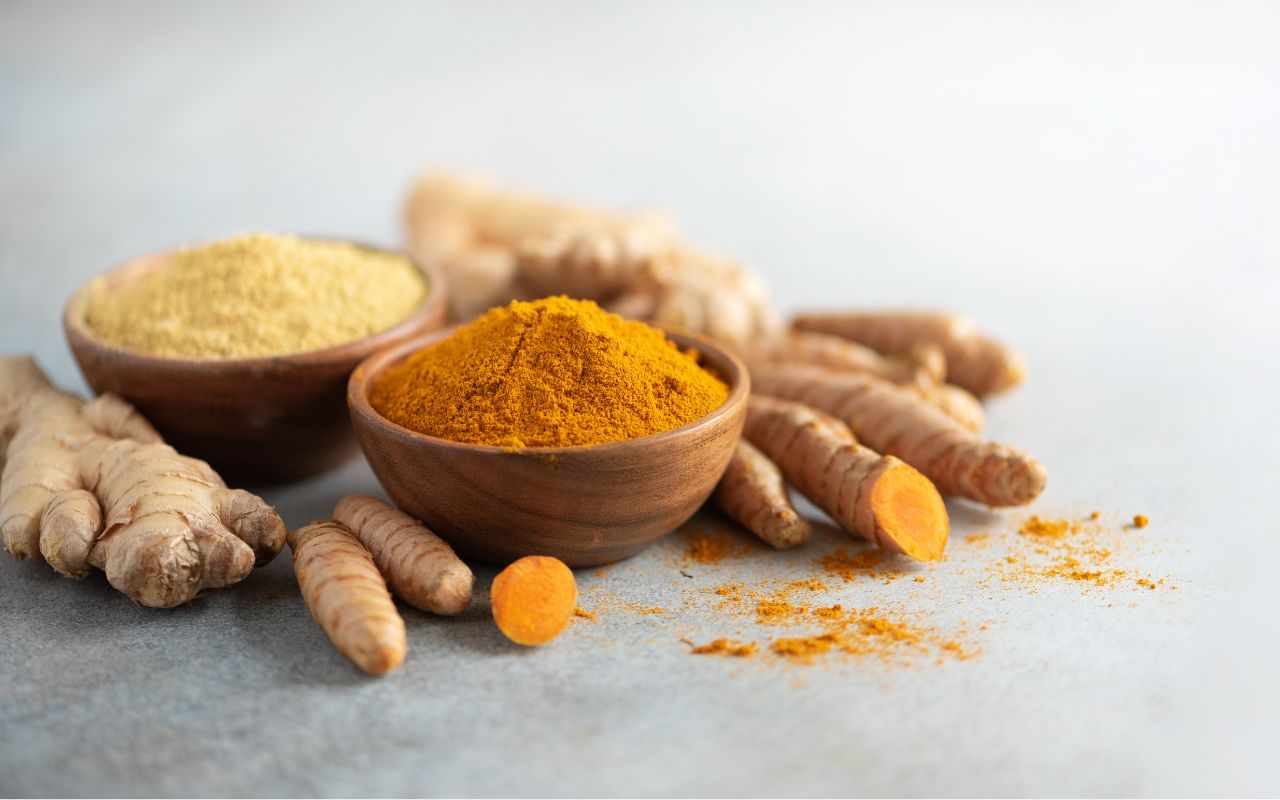Inflammation is a natural and essential process in the body, helping fight infection and aid in healing. However, chronic inflammation can lead to numerous health problems, including arthritis, heart disease, and more. Managing inflammation is critical, especially for those suffering from conditions where inflammation contributes significantly to their symptoms. Traditionally, over-the-counter (OTC) pain relievers have been the go-to solution for many; yet, in the realm of natural remedies, turmeric has emerged as a noteworthy contender. This article delves into how turmeric compares to OTC pain relievers for managing inflammation, considering their mechanisms, effectiveness, and potential side effects.
The Mechanics of Inflammation and Pain Relief
Inflammation involves a complex biological response to harmful stimuli such as pathogens, damaged cells, or irritants. It is characterized by redness, swelling, pain, and heat, the body's initial response to injury or infection. OTC pain relievers and turmeric aim to mitigate these symptoms, but they do so through different biochemical pathways.
Over-the-Counter Pain Relievers
OTC pain relievers, such as nonsteroidal anti-inflammatory drugs (NSAIDs), including ibuprofen and aspirin, work by inhibiting the enzymes cyclooxygenase-1 (COX-1) and cyclooxygenase-2 (COX-2). These enzymes synthesize prostaglandins—lipid compounds that mediate inflammation and pain. By blocking these enzymes, NSAIDs reduce the production of prostaglandins, thereby alleviating inflammation and pain. This mechanism is compelling but comes with potential side effects such as gastrointestinal issues, cardiovascular risks, and kidney damage.
Turmeric and Curcumin
Turmeric, a golden-yellow spice derived from the Curcuma longa plant, has been used for centuries in traditional medicine, particularly in Asia. The active compound in turmeric, curcumin, has potent anti-inflammatory and antioxidant properties. Curcumin works by inhibiting the activation of nuclear factor-kappa B (NF-kB). This protein complex controls the transcription of DNA and plays a key role in regulating the immune response to infection. Additionally, curcumin blocks inflammatory cytokines and enzymes, including COX-2, thus reducing inflammation and pain similarly to NSAIDs but through a broader spectrum of action.
Effectiveness in Managing Inflammation
The effectiveness of any anti-inflammatory treatment can be measured by its ability to reduce symptoms and improve quality of life. Both OTC pain relievers and turmeric have been studied extensively, and while both show promise, they offer different benefits in terms of onset, duration, and overall impact on health.
OTC Pain Relievers: Rapid Relief
One of the main advantages of OTC pain relievers is their quick action. These medications can relieve pain and reduce inflammation within minutes to hours, making them ideal for acute issues such as headaches, muscle aches, and minor injuries. This rapid onset of action is due to their direct and potent inhibition of the COX enzymes.
However, the short-term relief provided by NSAIDs often comes with the cost of side effects, particularly when used frequently or in high doses. Gastrointestinal problems, including ulcers and bleeding, are common, as are potential cardiovascular issues. Despite these risks, OTC pain relievers remain a mainstay for many due to their immediate efficacy.
Turmeric: Sustained, Holistic Benefits
Conversely, turmeric may not offer the same rapid relief as OTC pain relievers, but its benefits are significant, especially for chronic inflammation. Studies suggest that curcumin’s anti-inflammatory effects can be potent, often comparable to NSAIDs, but without severe side effects. For instance, research has shown that curcumin can reduce pain in people with knee arthritis in less than eight weeks.
The long-term use of turmeric is associated with a lower risk of adverse effects, making it a more sustainable option for managing chronic conditions such as osteoarthritis, rheumatoid arthritis, and other inflammatory diseases. Furthermore, curcumin’s antioxidant properties help protect cells from damage by neutralizing free radicals, thus offering additional health benefits beyond inflammation control.
Bioavailability: Enhancing the Efficacy of Turmeric
One challenge with turmeric is its bioavailability—how well and quickly a substance can be absorbed and used by the body. Curcumin, the active component, is poorly absorbed in the bloodstream when taken alone. However, several methods have been identified to enhance its bioavailability, increasing its effectiveness as an anti-inflammatory agent.
Combining with Piperine
One effective method is combining curcumin with piperine, a compound found in black pepper. Piperine enhances the absorption of curcumin by 2,000%, making the turmeric significantly more potent in smaller doses. This combination is often found in high-quality turmeric supplements.
Using Fatty Carriers
Curcumin is fat-soluble, meaning it dissolves in fat rather than water, aiding its absorption. Consuming turmeric with a source of fat, such as coconut oil or butter, can help the body absorb and utilize curcumin more efficiently.
Heat and Supplements
Heating turmeric can also increase its bioavailability. Cooking with turmeric or consuming it in warm beverages like golden milk can enhance its absorption. Additionally, turmeric extracts in the form of supplements often come with added bio-enhancers, making them more effective than dietary intake alone.
Comparing Side Effects: Safety Profiles
The safety of any medication or supplement is a paramount concern, especially for long-term use. OTC pain relievers and turmeric have side effects, but their nature and severity differ significantly.
OTC Pain Relievers: Risks and Precautions
Although effective, the regular use of NSAIDs carries notable risks. Studies have shown that they can cause gastrointestinal issues such as ulcers, bleeding, and stomach pain. Long-term use can also lead to kidney damage and increased risk of cardiovascular events such as heart attacks and strokes. Individuals with pre-existing conditions, elderly people, and those taking other medications are particularly at risk.
Turmeric: A Gentler Option
Turmeric is generally considered safe, with few side effects reported at higher doses. Some people may experience mild gastrointestinal discomfort or allergic reactions. However, these are usually minor compared to the significant risks associated with long-term NSAID use. It’s important to note that excessive consumption of turmeric for extended periods can lead to issues such as stomach upset and, in rare cases, kidney stones due to its oxalate content. Nonetheless, adhering to recommended dosages mitigates these risks.
Integrating Turmeric into Your Routine
Thanks to its versatility in culinary and supplemental forms, incorporating turmeric into your daily regimen can be simple and enjoyable. Whether you prefer using it in cooking or as a supplement, there are numerous ways to harness its potential health benefits.
Culinary Uses
Turmeric is a staple in many cuisines, particularly in South Asia. Adding it to dishes like curries, soups, and stews enhances flavor and boosts your intake of this beneficial spice. For instance, recipes like Bombay potato and leek soup or Thai parsnip and lime soup are excellent ways to incorporate turmeric into your diet. Turmeric can also be added to smoothies, teas, or even sprinkled over roasted vegetables.
Supplements
Turmeric supplements are a practical option for those seeking a more concentrated dose. These supplements often contain bio-enhancers such as piperine to improve absorption. They come in various forms, including capsules, powders, and liquid extracts. When selecting a supplement, choosing products from reputable brands that provide clear dosing instructions and use high-quality ingredients is essential.
Beverages
Turmeric-infused drinks like golden milk or turmeric lattes are becoming increasingly popular. These beverages typically include a fat source like coconut milk and a pinch of black pepper to enhance the bioavailability of curcumin. They offer a delicious and soothing way to incorporate turmeric into your routine, especially during colder months.
Comparative Studies and Clinical Trials
Numerous studies have compared the effectiveness of turmeric and OTC pain relievers in managing inflammation and pain. While direct comparisons are relatively rare, existing research provides valuable insights into their comparative benefits and drawbacks.
Clinical Evidence for NSAIDs
NSAIDs are well-established in their efficacy for reducing acute inflammation and pain. Clinical trials have consistently shown effectiveness in treating conditions like arthritis, menstrual cramps, and minor injuries. However, their long-term use is limited due to the significant risk of side effects.
Research on Turmeric and Curcumin
Extensive research has focused on curcumin’s anti-inflammatory properties. Studies suggest that curcumin can be as effective as some NSAIDs in reducing inflammation and pain, particularly in chronic conditions. For instance, a study published on A. Vogel indicated that turmeric could offer protection against free radicals and reduce inflammation in conditions like arthritis.
Another study highlighted on Finish Line PT suggests that curcumin helps manage oxidative stress and inflammation, leading to faster recovery and improved performance after exercise. These findings are encouraging, particularly for individuals seeking natural alternatives to conventional medications.
Comparative Analysis
While turmeric and OTC pain relievers have their place in managing inflammation, their use may depend on individual needs and circumstances. For acute, short-term pain and inflammation, NSAIDs might be the most effective option due to their rapid onset of action. However, turmeric offers a safer and potentially equally effective alternative for the long-term management of chronic conditions, especially considering its additional health benefits and lower risk of severe side effects.
Conclusion: Finding the Right Balance
The decision to use turmeric or OTC pain relievers for managing inflammation should consider factors such as the severity and duration of symptoms, individual health conditions, and personal preferences. While OTC pain relievers provide quick and effective relief for acute issues, their long-term use poses significant risks. With its potent anti-inflammatory and antioxidant properties, turmeric offers a gentler, sustainable approach, particularly for chronic conditions.
Incorporating turmeric into your daily regimen, whether through diet or supplements, can provide substantial health benefits. Its versatility in culinary applications and availability in various supplement forms make it an accessible and appealing option for many. Ultimately, a balanced approach that integrates lifestyle modifications, dietary adjustments, and appropriate use of natural remedies and conventional medications may offer the most effective strategy for managing inflammation and maintaining overall health.









